Key Takeaways:
- Traditional IVR systems use pre-recorded menus and keypad inputs to automate call routing and provide basic self-service, but they offer limited flexibility, often leaving callers frustrated.
- Conversational IVR is an advanced form of traditional IVR that uses speech recognition and natural language processing to let callers interact with the system using their own words.
- AI voice bots/ voice agents go beyond the limitations of conversational IVR systems, offering natural, human-like interactions and the ability to resolve complex tasks autonomously.
- IVR systems are gradually being replaced by AI voice bots, which deliver better customer experience, flexibility, and scalability, quickly becoming the new standard in call centers.
IVR (Interactive Voice Response) systems have been around for decades. And as a customer, you surely know just how frustrating and unhelpful they can be. More often than not, you end up stuck in an endless loop, desperately trying to get an answer to a simple question or reach a real person – while navigating clunky, outdated menus.
Fortunately, Artificial Intelligence has made IVR systems a lot smarter and much more efficient, evolving them into what we now call conversational IVR. These tools are more flexible and deliver a far better customer experience – but they still fall short compared to what AI voice bots can deliver. So, what’s the real difference between traditional IVR systems, conversational IVR, and AI voice bots? And more importantly, which one is right for your business? Let’s break it down.
What is Conversational IVR?
Conversational IVR is an advanced version of a traditional IVR system that uses Automatic Speech Recognition (ASR) and Natural Language Processing (NLP) to understand spoken language. That allows callers to interact with the IVR system using their own words, just as they would when talking to a live agent.
Imagine calling a customer support line and instead of selecting options using numerical keys, you can speak your request in a full sentence (e.g., ‘I need help with a billing issue’ or ‘I want to talk to a tech support’). The conversational AI system understands your intent and responds appropriately, guiding you through the process with pre-recorded responses or directing you to the right agent or department.
What are the Most Common Conversational IVR Use Cases?
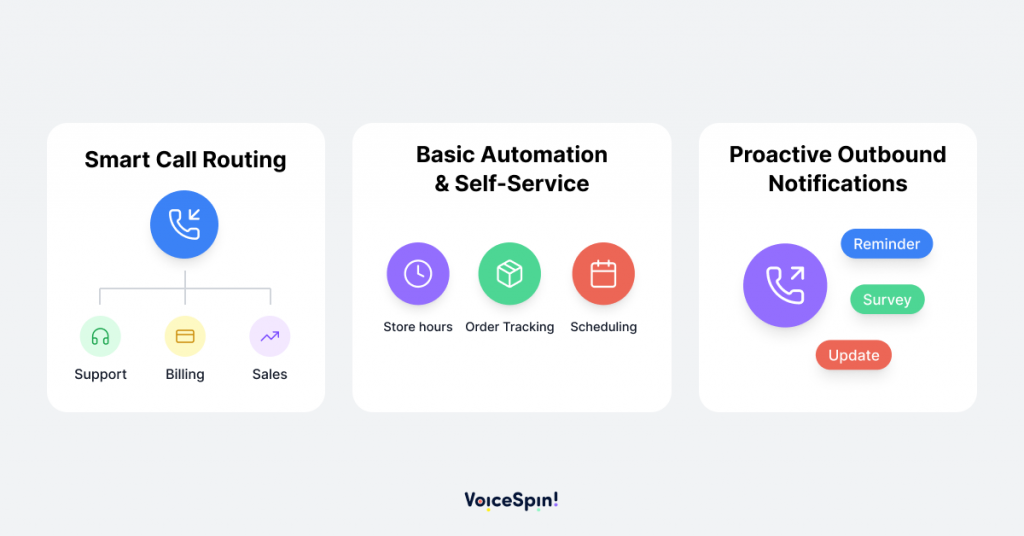
- Smart call routing: Pretty much like traditional Interactive Voice Response IVR systems, conversational AI is primarily used to pre-screen inbound calls, gather information about callers, and route them to the most appropriate department or specific agent, reducing call transfers and improving First Call Resolution (FCR) rates. This is the most fundamental and widespread use case for both traditional and conversational IVR systems.
- Basic automation and self-service: Conversational IVR systems are commonly used to provide callers with basic self-service support, without having to interact with a human rep. They can provide information like store locations and operating hours and help callers with account management, order management (checking order status or tracking shipments), and appointment management.
- Proactive outbound notifications: Conversational IVR systems aren’t just reactive. They can be integrated with auto dialing systems and used to automate proactive outbound campaigns, like appointment reminders, payment reminders, delivery updates, service outage notifications, or customer surveys . E.g., the system calls a client to remind them of an upcoming appointment and allows them to either confirm it or reschedule.
What is the Difference Between Conversational IVR and Traditional IVR?
A traditional Interactive Voice Response system is the legacy call center technology. In fact, the first implementation of IVR systems dates back to the 1970s. They are basically automated telephony systems that interact with callers, gather information, and route inbound calls to the appropriate destination. Outbound IVR systems can also initiate outbound calls for proactive campaigns.
With traditional IVR, users navigate through pre-recorded menus by listening to options (e.g., “Press 1 for Sales, Press 2 for Customer support“) and using keypad inputs (DTMF) or limited voice commands. The primary goal is to sort and route calls and deliver very basic self-service. But the biggest problem with traditional IVR is that if your request doesn’t fit into one of its categories, you’re stuck.
Conversational IVR engages callers in a bit more natural way. Instead of navigating through rigid menu options, users can simply say things like “I want to pay my bill” or “I’d like to check my account balance”, and the system will understand their intent and then either connect them to the right department or guide them through the self-service process.
What is the Difference Between Conversational IVR and AI Voice Bots?
First off, it’s important to understand that these aren’t the same. Technically speaking, AI voice bots (also known as AI voice agents or voice AI agents) are far more advanced than conversational IVR systems in terms of capabilities and intelligence.
AI voice bots rely on Automatic Speech Recognition (ASR), Natural Language Processing (NLP), Natural Language Understanding (NLU), Natural Language Generation (NLG), Large Language Models (LLMs), Text-to-Speech (TTS), and Machine Learning (ML) to interact with callers in a truly natural way, just like your human reps would. AI voice bots are built to understand context, reason, respond naturally, and resolve complex issues independently, often without human intervention.
They can integrate with back-end systems (like CRM, ERP, calendar tools, e-commerce platforms, ticketing systems, etc.) to access real-time customer data, trigger workflows, and perform actions like updating account details, booking appointments, initiating refunds, upgrading subscriptions, processing payments, and much more – autonomously.
Conversational Interactive Voice Response systems are more limited in their capabilities compared to AI voice bots and can only take users so far before hitting a dead end. At some point, you either connect to a live person, leave a message, or simply disconnect from the call, while your questions are often left unanswered. The outcome? Customers still get frustrated when interacting with your IVR system, even though it’s supposed to be conversational.
Recommended reading: 10 Best AI Voice Agents for Business in 2025
Conversational IVR vs. Traditional IVR vs. AI Voice Bots: Key Differences Summarized
| Traditional IVR | Conversational IVR | AI Voice Bot/ AI Voice Agent | |
|---|---|---|---|
| Core technology |
|
|
|
| Interaction style | Menu-driven: users navigate a pre-recorded phone menu by pressing buttons on their phone keypad or by voice commands | Voice-enabled: users navigate phone menus through natural language input. More flexible, but still follows a structured path | Conversational: can understand the user’s intent and context and respond naturally, allowing for a two-way, free-flowing dialogue. Can ask clarifying questions and handle multi-turn conversations without losing context |
| User experience | Frustrating, impersonal, and robotic: users are often forced to listen to a long list of options and wait on hold | Feels more natural than traditional IVR, more intuitive, less frustrating, with faster navigation and reduced friction | Highly engaging and natural: can handle interruptions intelligently, respond in a human-like way, and provide a highly personalized experience |
| Error handling | Limited, often repeats menu, transfers to agent, or ends the call after multiple failures | Fallback to pre-defined options or agent transfer, struggles with out-of-scope requests | Can recognize when it doesn’t understand, ask clarifying questions, and transfer to human agents with full context. Learns from errors to improve future interactions |
| Integrations | Limited or static integrations with back-end systems | Can be integrated with CRM and databases; may require custom development for complex integrations | Deep integration with CRMs, ERPs, knowledge bases, and other back-end systems for complex transactions. Can retrieve data in real time and trigger actions in external systems |
| Integrations | Limited or static integrations with back-end systems | Can be integrated with CRM and databases; may require custom development for complex integrations | Deep integration with CRMs, ERPs, knowledge bases, and other back-end systems for complex transactions. Can retrieve data in real time and trigger actions in external systems |
| Scalability and flexibility | Limited and inflexible | More flexible than traditional IVR | Highly scalable; can handle thousands of simultaneous calls |
| Use cases | Call routing, low-complexity FAQs, account balance checks, store hours and location lookup | Self-service for common queries, basic technical support, order status updates, appointment scheduling | Can handle complex tasks like troubleshooting, transactional requests (e.g., order placement, returns, payment processing, etc.), lead qualification, and proactive outreach |
| Implementation cost | Lower initial cost, often included with phone service plans. Can have high long-term costs due to agent escalations | Moderate initial investment that varies based on complexity and integrations. Lower long-term costs due to increased automation | Higher initial investment but delivers significant cost savings over time through automation, agent deflection, scalability, and 24/7 availability |
Key takeaways: Conversational IVR systems are the evolution of traditional IVR technology. They deliver a slightly better user experience, but they are still limited to rule-based dialogue management, can’t hold natural conversations like AI voice bots, and are less efficient. AI voice bots are much more technically advanced and go far beyond offering basic self-service – they are the natural progression from traditional and conversational IVR systems.
Are AI Voice Bots Going to Replace IVR Systems?
In short, yes, though not entirely and not overnight. But at this point, it’s clear that AI-powered voice bots and voice AI agents are becoming the new standard in the contact center industry. No wonder the market is literally booming right now. According to a report from Market.us, the global Voice AI Agents market is projected to grow from $2.4B in 2024 to $47.5B by 2034.
Now let’s take a closer look at why IVR systems are on their way out and how AI voice bots/ voice agents outperform them by a mile:
Improve customer satisfaction
First and foremost, AI voice agents deliver instant answers, reducing wait times for callers and eliminating customer frustration. But it’s actually not just the speed. Integrations with back-end systems and direct access to company-specific data allow AI voice agents to provide highly accurate responses and handle requests end-to-end, without relying on human reps. And that’s a huge step forward in improving customer satisfaction.
Interact like a real human
Yes, AI voice bots have become so realistic that many people can’t even tell whether they’re speaking to a bot or a human. They are built to listen, understand, and respond in a way that mimics natural human conversation. They can even handle interruptions intelligently. If you cut the bot off mid-sentence, it can quickly adapt and respond based on your new input.
Perform actions beyond answering FAQs
This is a core differentiator, and we’ve already mentioned it earlier. Beyond responding to questions and providing information, deep integrations with back-end systems enable AI voice agents to perform complex actions like updating a subscription, processing a payment, initiating a product return, booking or rescheduling an appointment – you name it! And that ultimately transforms your voice support channel into a powerful self-service tool.
Support broader use cases
Compared to IVR systems, AI voice bots can support a much broader range of use cases, like:
- Technical troubleshooting
- Real-time inventory lookup
- Promotional campaigns and recommendations
- Automated cold calling campaigns
- Lead screening and qualification
- Payment reminders and debt collection
- Customer surveys and debt collection
- Donor outreach and donation processing
Yes, AI voice bots can manage all of these scenarios autonomously, without human intervention.
Personalize interactions
Customers increasingly demand personalization when interacting with brands – and AI voice bots deliver just that. They can easily tap into customer data (in your CRM, internal database, order management system, etc.) and tailor each conversation based on past interactions, purchase history, and current account status. And greater personalization means better overall customer experience.
Deliver multilingual support
This is particularly valuable for businesses with a global or multilingual customer base. With IVR systems, supporting multiple languages might be time-consuming and expensive. You basically need to build separate IVR menus and record every single menu prompt and message in every language. Modern voice AI agent platforms are built with multilingual capabilities at their core – they can support dozens or even hundreds of languages and dialects.
Scale on demand
Being cloud-native, AI voice bots can easily scale to handle large call volumes. While IVR systems can typically handle a limited number of concurrent calls, AI voice bots can manage thousands of simultaneous conversations without any drop in performance. The best part? As they can handle customer queries independently, you don’t have to hire additional human reps during seasonal call spikes.
Learn from past interactions
Last but not least, AI voice agents can continuously learn from past customer interactions thanks to Machine Learning and feedback loops. That means your AI voice agent becomes smarter over time with every single interaction it handles. In contrast, IVR systems – conversational or traditional – remain static unless manually updated.
Get Started with AI Voice Bots Now: How VoiceSpin Can Help
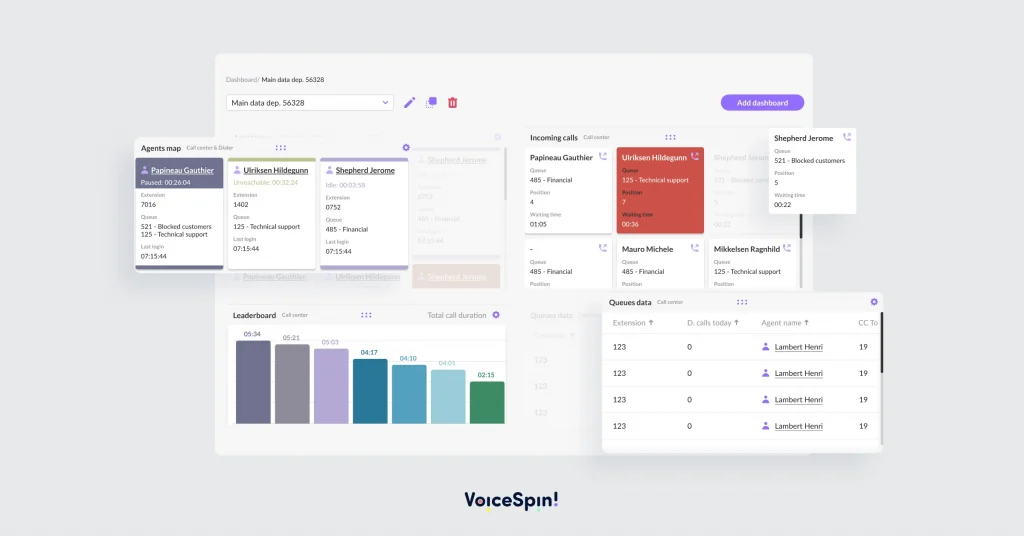
Interactive Voice Response systems might still be valuable for businesses with straightforward support needs or limited budgets. But let’s face it, customer expectations continue to rise, and forcing callers to navigate a maze of phone menus just doesn’t cut it anymore in most cases. That’s why AI voice bots/ voice AI agents are quickly becoming the standard, leaving IVR systems behind.
So, here’s why VoiceSpin’s AI voice bot solution might be just right for your business:
- RAG-powered: can pull information directly from your company’s knowledge sources to provide highly accurate answers through Retrieval-Augmented Generation.
- Built-in telephony: comes with a full-suite contact center software platform with built-in telephony and access to local numbers from 160+ countries.
- Contextual call escalations: can seamlessly hand off calls to human agents while preserving context, so callers don’t have to repeat themselves.
- Multilingual support: supports 100+ languages and dialects so you can build multilingual voice bots and support your customers in the language of their preference.
- Smart interruption handling: handles interruptions like a real human agent and adjusts the conversation based on the new user input.
- Third-party integrations: can integrate with CRM systems, calendar software, and other back-end systems to automate workflows and perform actions.
- Instant scalability: can be easily scaled to handle thousands of customer calls simultaneously without compromising on call quality.
Book a demo call now to see VoiceSpin’s AI voice bot solution in action and learn how it can automate your customer service and sales calls while reducing operational costs.
Frequently Asked Questions
What are the benefits of conversational IVR?
Much like traditional IVR, conversational IVR systems are designed to help businesses improve call routing, increase First Call Resolution rates, and offer basic self-service – all while reducing the burden on live agents. But unlike traditional IVR, conversational IVR creates a better customer experience by letting callers speak naturally instead of forcing them to navigate confusing, menu-driven phone trees.
What is the future of IVR and conversational IVR?
Conversational IVR systems will continue to get smarter and more efficient by integrating deeper with AI technologies like Natural Language Processing, sentiment analysis, and back-end data. But ultimately, they are likely to be gradually replaced by AI-powered voice bots/ voice AI agents. That’s because today’s customers don’t want to navigate phone menus. They expect fast, human-like support that solves their issues right away, without waiting for a live agent. And AI voice bots can deliver that kind of instant, natural, and efficient experience.
Can AI voice bots replace human agents?
Not entirely, but in many cases – yes. AI voice bots can answer common questions, provide and collect information, qualify leads, schedule appointments, and do so much more – independently. But, of course, when it comes to handling complex requests that require empathy, nuanced problem-solving, and critical thinking, AI voice bots may fall short – and that’s where human agents are still irreplaceable. The best strategy is to have AI voice bots and human reps work together, complementing each other.

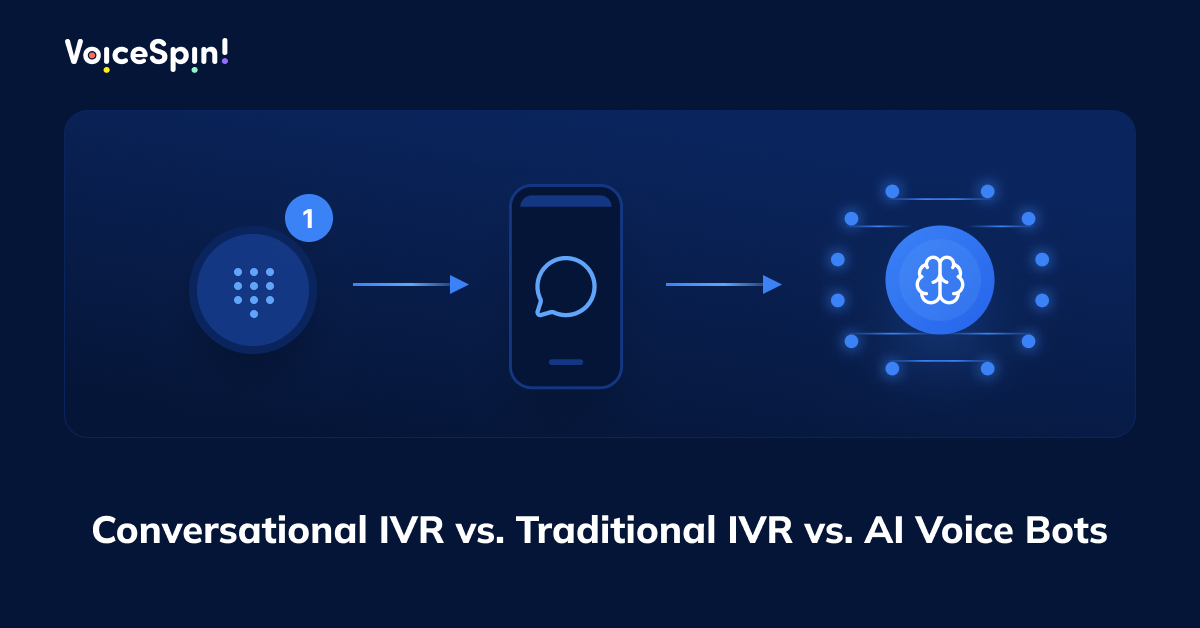

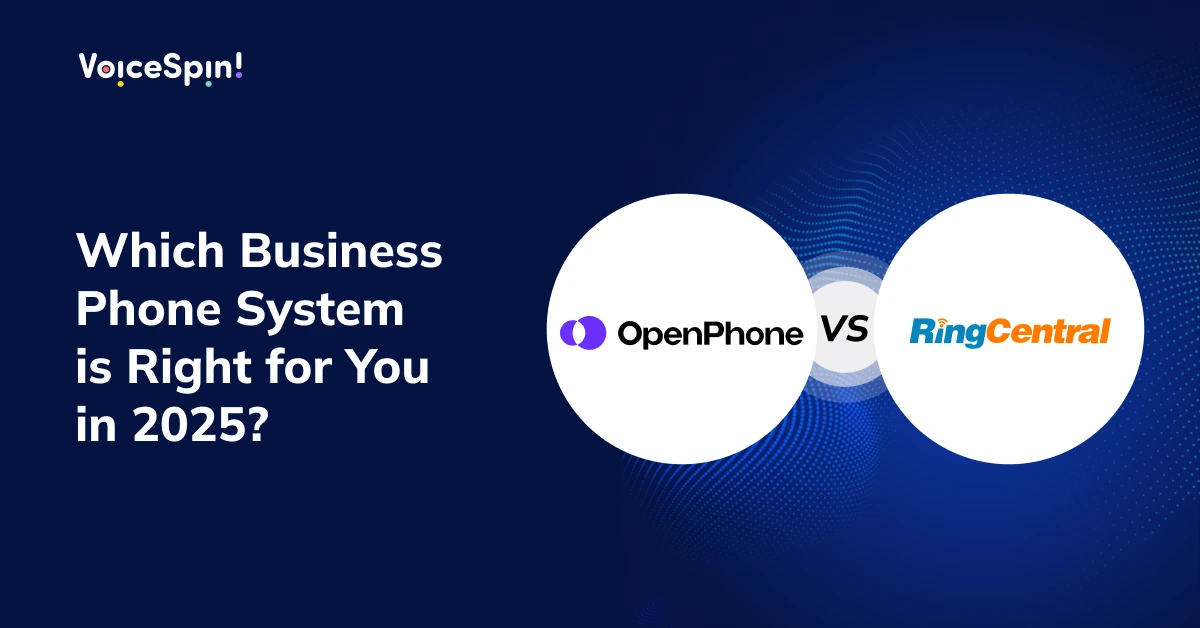
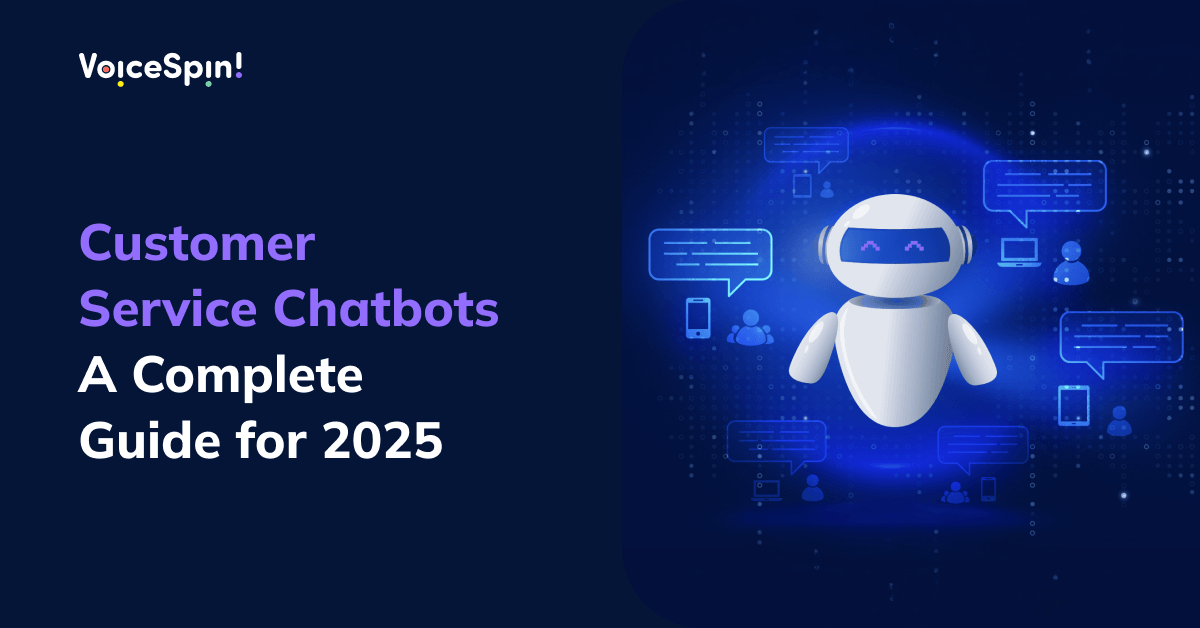
 +18889082995
+18889082995
 +442036084160
+442036084160
 +97237237006
+97237237006